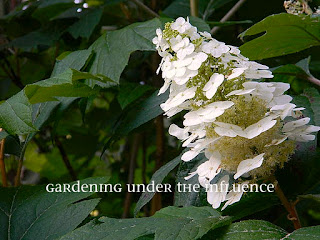Plant of the Month: Camellia Sasanqua
When I think of a southern garden, two plants come to mind: magnolia and camellia. Not all of us have the room for the magnificent magnolia, but don’t feel like you are settling for a camellia. Camellias have been stealing the show in the garden for the past two months. While leaves have been dropping as fast as the thermometer, the camellia has been wowing us with its winter blooms.
The sasanqua camellia can tolerate quite a bit more sun then camellia japonica. Sasanquas bloom in November and December. Even when the blooms are gone, you are left with beautiful dark evergreen foliage. Many of the older, established homes have large, beautiful camellias worked into the landscape, but they seem to be missing from many of the newer neighborhoods. Such a shame, as these spectacular plants deserve a place in every garden. The sasnquas range in sizes from short to tall and colors vary from white to pink to red, and sometimes a mix of all three. There is also a variety which works wonderfully as an espalier on a wall. So there is really no excuse for not having one in your yard.
Camellias have a beautiful natural shape and do not require a lot of pruning. If it is pruned, be sure to do it shortly after blooming, as it sets its buds for next year. Insect problems can be scale which will cause the leaves to turn yellow and fall off or spider mites which will cause the leaves to turn bronze and speckle. These can be treated. Proper planting and drainage can help prevent diseases associated with camellias.
So make a New Year’s resolution to show off your southern flare and make your Northern friends envious by planting a camellia.







































